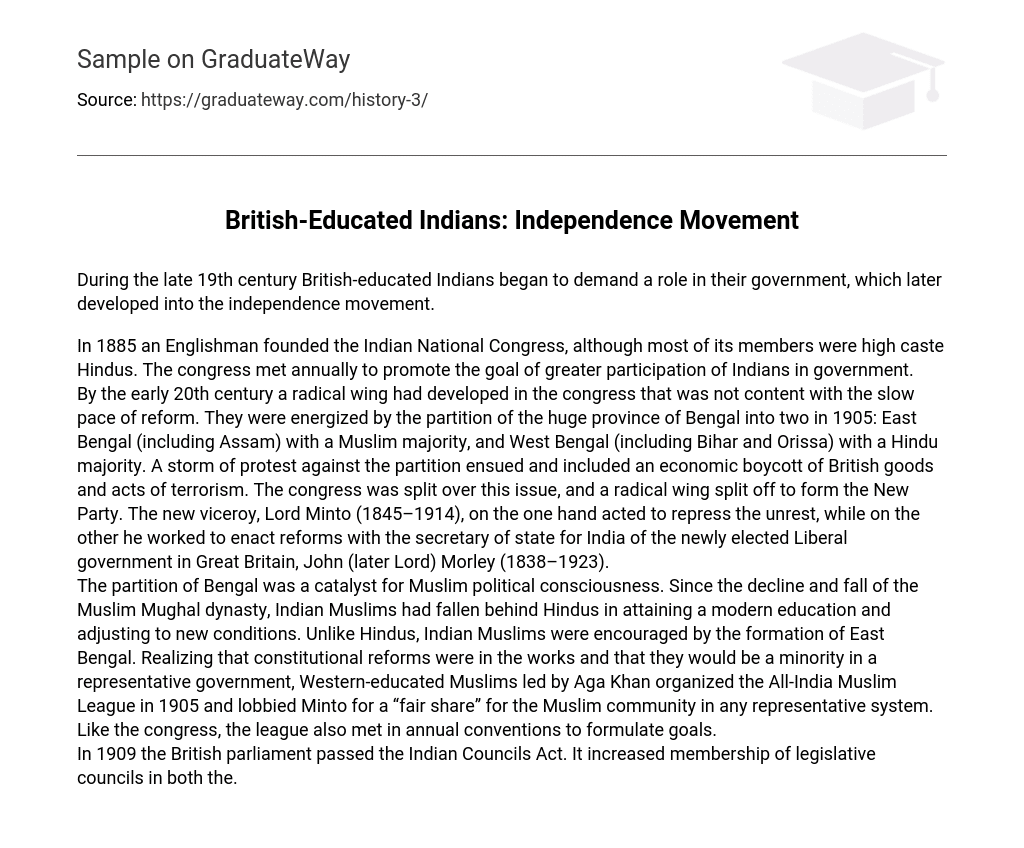During the late 19th century British-educated Indians began to demand a role in their government, which later developed into the independence movement.
In 1885 an Englishman founded the Indian National Congress, although most of its members were high caste Hindus. The congress met annually to promote the goal of greater participation of Indians in government.
By the early 20th century a radical wing had developed in the congress that was not content with the slow pace of reform. They were energized by the partition of the huge province of Bengal into two in 1905: East Bengal (including Assam) with a Muslim majority, and West Bengal (including Bihar and Orissa) with a Hindu majority. A storm of protest against the partition ensued and included an economic boycott of British goods and acts of terrorism. The congress was split over this issue, and a radical wing split off to form the New Party. The new viceroy, Lord Minto (1845–1914), on the one hand acted to repress the unrest, while on the other he worked to enact reforms with the secretary of state for India of the newly elected Liberal government in Great Britain, John (later Lord) Morley (1838–1923).
The partition of Bengal was a catalyst for Muslim political consciousness. Since the decline and fall of the Muslim Mughal dynasty, Indian Muslims had fallen behind Hindus in attaining a modern education and adjusting to new conditions. Unlike Hindus, Indian Muslims were encouraged by the formation of East Bengal. Realizing that constitutional reforms were in the works and that they would be a minority in a representative government, Western-educated Muslims led by Aga Khan organized the All-India Muslim League in 1905 and lobbied Minto for a “fair share” for the Muslim community in any representative system. Like the congress, the league also met in annual conventions to formulate goals.
In 1909 the British parliament passed the Indian Councils Act. It increased membership of legislative councils in both the.





